Go Green Taruparwa
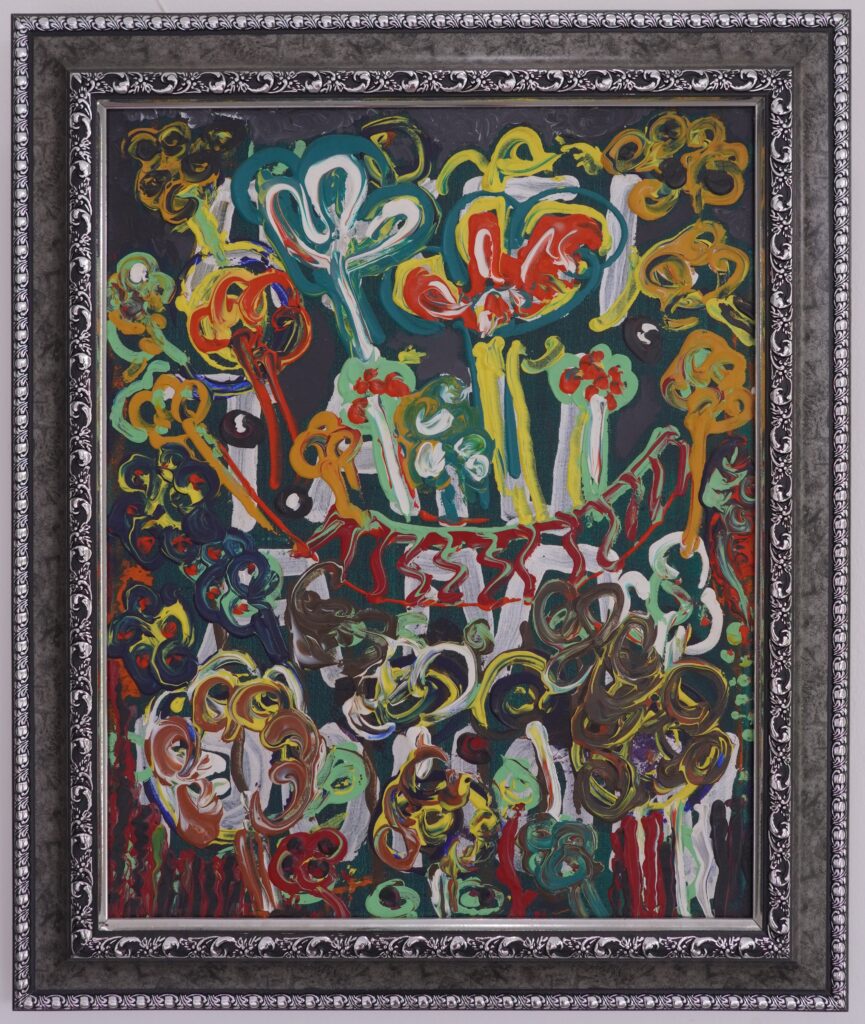
"Go Green Taruparwa" by Liem Sian An (Sam Sianata)
"Go Green Taruparwa" is an artwork that reflects the spirit of environmental preservation and harmony with nature, combining profound visual elements and philosophical meanings.
🖼️ Overview & Concept
- "Go Green Taruparwa" embraces the theme of environmental conservation, inviting viewers to recognize the importance of protecting nature.
- The title "Taruparwa" refers to the harmony between humans and nature, with "Go Green" serving as a call to action.
🎨 Technique & Aesthetics
- Color Palette: Dominated by green, brown, and blue to reflect natural elements such as forests, water, and sky.
- Expressive Style: Employs dynamic brushstrokes to depict the vibrant energy of nature.
- Symbolic Composition: Features elements like trees, leaves, or water to convey environmental messages.
🧠 Symbolic Meaning
- Nature: Symbolizes life, sustainability, and humanity's responsibility towards the environment.
- Harmony: Illustrates the balance between humans and nature as the core of true happiness.
- Call to Action: Encourages viewers to participate in the environmental preservation movement.
💫 Philosophy & Theme
- Promotes awareness of the impact of human activities on nature.
- Invites viewers to reflect on their relationship with the environment and how to maintain sustainability.
- Presents optimism that small actions can lead to significant change.
🪞 Visual Elements
- The "Go Green Taruparwa" logo as a symbol of this movement, featuring a simple yet powerful design:
-

💎 Conclusion
- "Go Green Taruparwa" is an artwork that combines aesthetics with an environmental message.
- Through natural colors and symbolism, this work inspires tangible actions for environmental preservation.
- As part of Sam Sianata's vision, this artwork encourages viewers to live in harmony with nature.
Tapak (Palm)
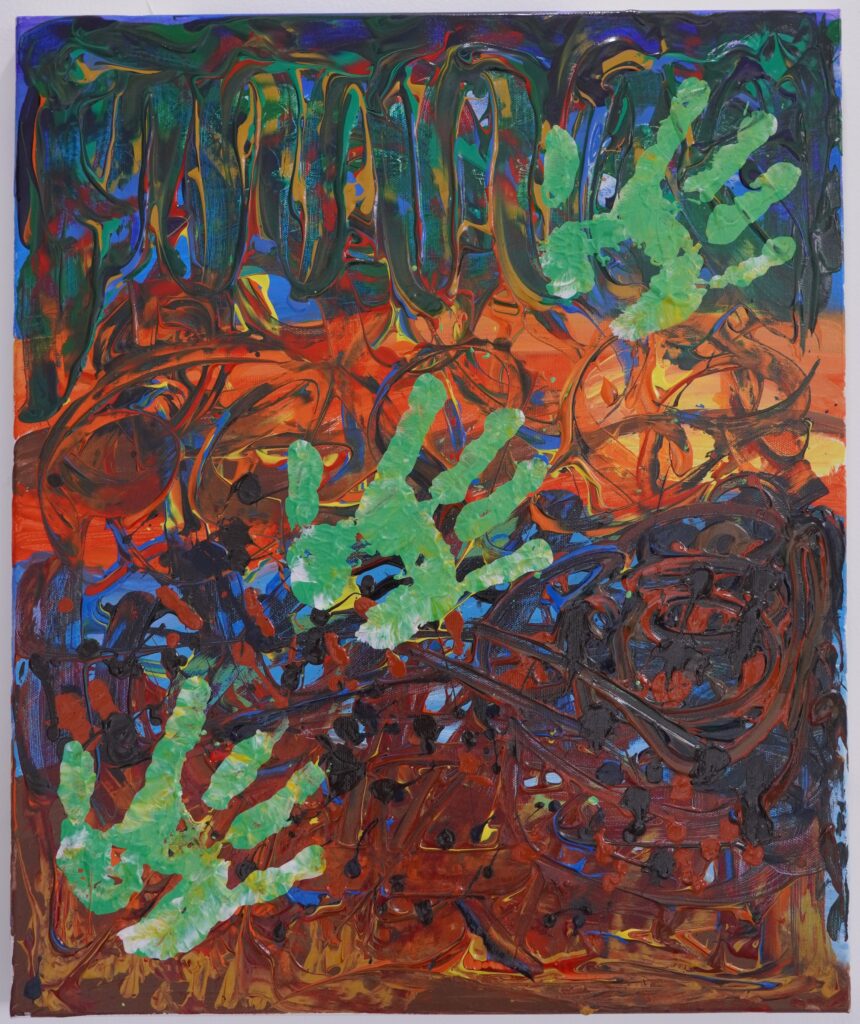
Study of the Painting "Tapak" by Liem Sian An (Sam Sianata)
"Tapak (Palm)" is an artwork that reflects the traces of life revealed through hands, inviting viewers to contemplate the contributions and legacies left behind in their life journey.
🖼️ Artwork Identity & Context
- Title: Tapak (Palm)
- Artist: Liem Sian An (Sam Sianata)
- Size: 55 cm × 70 cm
- Medium: Mixed media (painting with symbolic elements)
- Exhibition: MeneerSam Gallery, Kuta, Bali (along with 6 other works)
🧠 Meaning & Philosophy
- Depicts "tapak (palm)" as a symbol of meaningful life traces—individual paths, actions, contributions, and positive impact.
- Invites reflection on the legacy left behind: "What kind of traces do our hands leave in this world?"
- Focuses on existentialism: life is not just a journey, but about the meaning that remains.
"Tapak (palm) is a symbol of a life journey that is not in vain—a trace that remains even after the body is gone."
🎨 Aesthetics & Multidisciplinary Approach
- Style: Expressive symbolic with rich colors and abstract forms.
- Dual Work: Combines painting with songs, poems, and the "Tapak (Palm)" character mascot.
- Additional Elements: Theme song deepens the narrative, while the mascot and poem strengthen emotional resonance.
💫 Visual Study
| Aspect | Explanation |
|---|---|
| Physical Dimensions | 55 cm × 70 cm |
| Main Theme | Traces of life, contributions, and legacy of values (seen through hands) |
| Philosophy | Tapak (palm) = symbol of a useful and memorable life |
| Style | Expressive symbolic with abstract colors and forms |
| Additional Works | Songs, character mascot, poems |
| Function of Art | Arousing existential and spiritual awareness |
🖼️ Additional Gallery


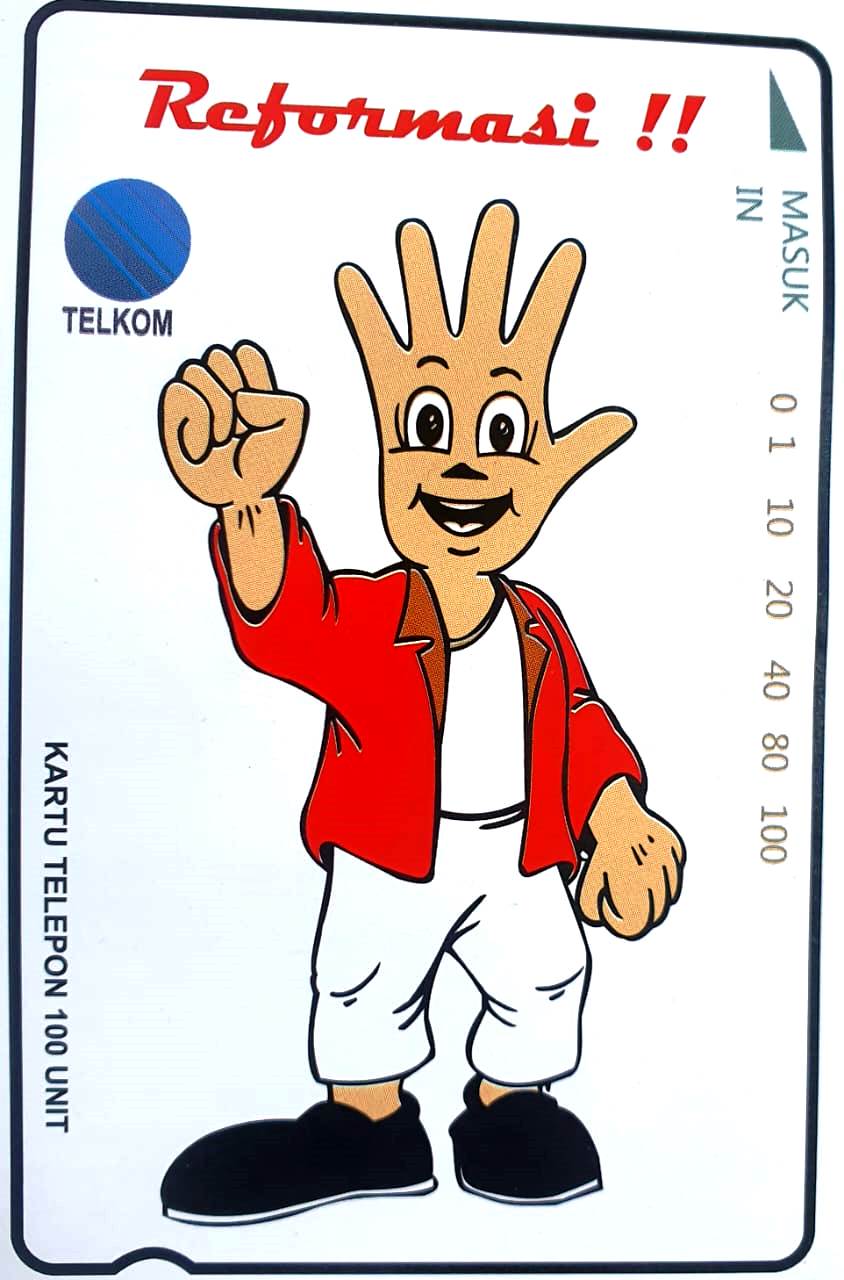


💎 Appreciation Approach
- Observe visual elements like colors and shapes to understand the symbolism of handprints in life.
- Reflect on personal meaning: what legacy do you want your actions (hands) to leave in life?
- Listen to the theme song and read Sam Sianata's poems for a holistic experience.
- Discuss with others: how does this work inspire you to contribute?
Sang Raja Cinta
(The King of Love)
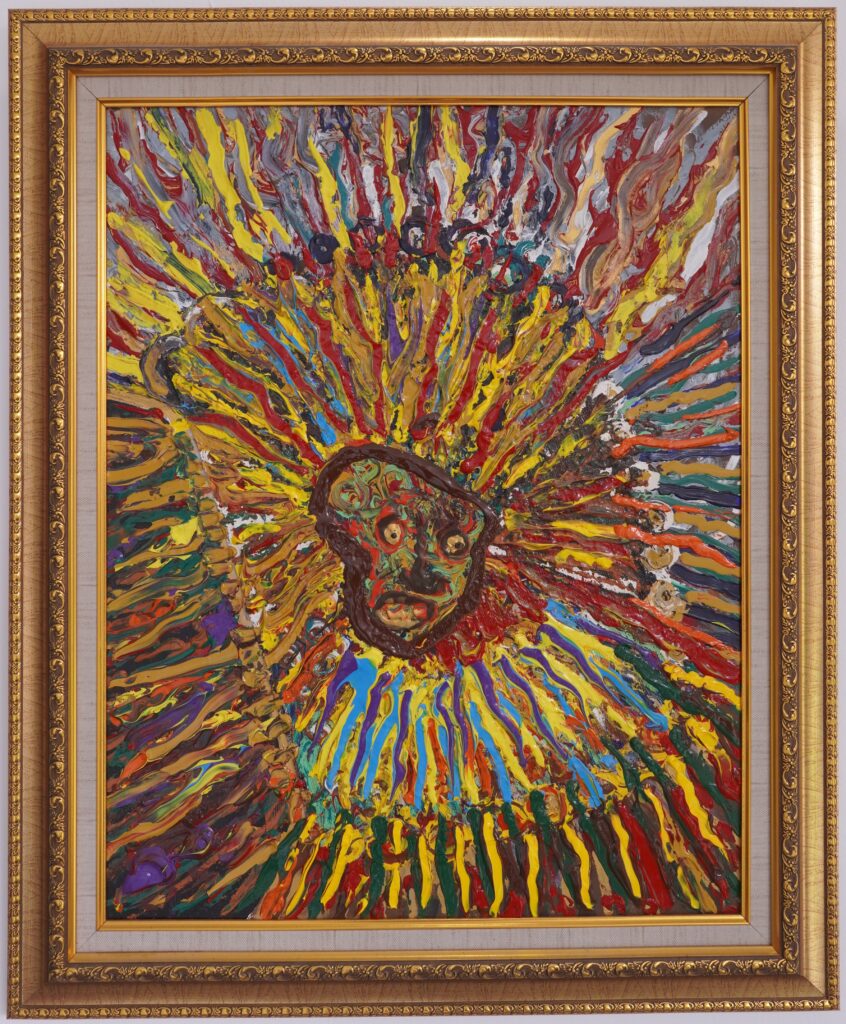
“Sang Raja Cinta (The King of Love)” by Liem Sian An (Sam Sianata)
The painting “Sang Raja Cinta (The King of Love)” is an artwork that combines symbolism, spirituality, and expressionism to convey the power of love as the essence of leadership.
🖼️ Overview & Concept
- The title “Sang Raja Cinta (The King of Love)” merges “Raja” (power) and “Cinta” (universal love), symbolizing leadership founded on gentleness.
- It portrays love as a universal force that transcends cultural, age, or regional boundaries.
🎨 Technique & Aesthetics
- Style: A combination of symbolic, spiritual, and expressionistic elements.
- Colors: Dominated by warm hues (yellow, blood red, brown, golden) with accents of sacred white, reflecting divine power and agape love.
- Composition: A central figure (the king) with an aura of love, surrounded by cosmic elements or common people, signifying the connection between the divine and the earthly.
🧠 Symbolic Meaning
- Heart-Shaped Crown: Symbolizes gentle yet firm authority.
- Vibrant Colors: Reflect the acceptance of diversity and the universal nature of love.
- Light Above the Head: A symbol of spiritual enlightenment and revelation.
- Background of People or Nature: Emphasizes inclusive and popular love.
💫 Spiritual & Social Dimension
- Refers to spiritual figures such as Jesus as the King of Love, the Buddha of Love, or a leader as a mercy to all creation (rahmatan lil ‘alamin) in Islam.
- It represents the vision of an ideal leader who governs with compassion, not violence.
- It also highlights the darker side of love's ego, such as domination or betrayal, which can have fatal consequences.
🪞 Dual Art Approach
- Part of Sam Sianata's “dual artwork” approach, it blends the painting with a theme song for a rich visual-auditory experience.
- This results in an exotic and contemplative multidisciplinary masterpiece.
💎 Conclusion
- “Sang Raja Cinta (The King of Love)” is a visual manifesto on the importance of love in leadership.
- It invites viewers to contemplate the true meaning of leadership in personal, social, and spiritual contexts.
- Through a rich artistic approach, this work inspires social change based on compassion and humanism.
Rupatawa
(My Smile, My Happiness)
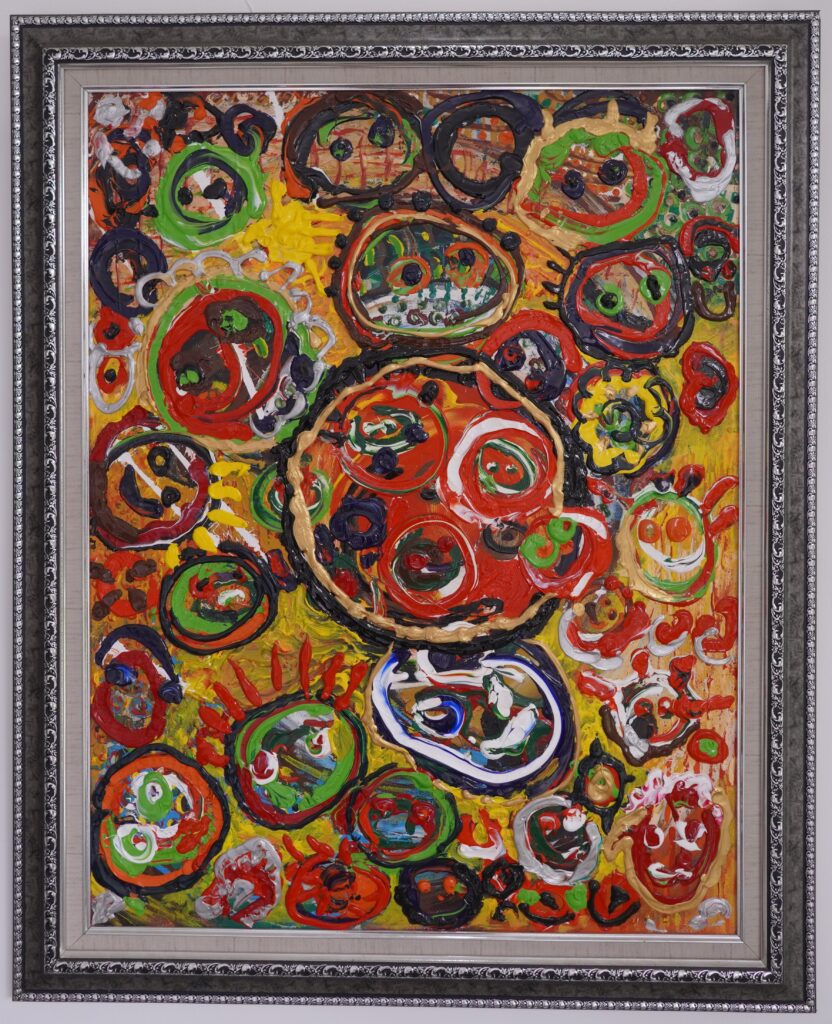
“Rupatawa (My Smile, My Happiness)” by Liem Sian An (Sam Sianata)
The painting “Rupatawa” is an art piece rich in symbolism, depicting the diversity and depth of the human soul through an expressionistic and surreal approach.
🖼️ Overview & Concept
- The title “Rupatawa” (My Smile, My Happiness) refers to rupa (appearance) and tawa (expression of soul, joy, or spirituality).
- This work reflects multidimensional humanity, displaying rich colors and symbols that invite contemplation.
🎨 Technique & Aesthetics
- Expressionist Style: Distorted forms full of emotion.
- Surrealist Elements: Unrealistic backgrounds, reflecting inner realities like dreams.
- Contrasting Colors: A dynamic palette reflecting the richness of human emotions and inner conflicts.
🧠 Symbolic Meaning
- Diverse Faces: Symbolizing cultural diversity, feelings, and life values.
- Unrealistic Background: Emphasizing the human soul over physical appearance.
- Smile and Laughter: Expressions of joy and happiness as a reflection of spiritual identity.
💫 Message & Reflection
- Invites viewers to reflect on their true identity behind their “appearance”.
- Questions how humans hide their wounds, laughter, or hopes behind their appearance.
- Encourages a life full of laughter and gratitude in all situations.
🪞 Artistic & Cultural Value
- Raises the theme of universal humanity in contemporary Indonesian art.
- Non-normative visuals that free viewer interpretation.
- Invites deep contemplation, going beyond mere aesthetics.
💎 Conclusion
- “Rupatawa” is a mirror of the human soul, combining psychological, philosophical, and spiritual approaches.
- This work is a multi-disciplinary masterpiece that invites viewers to find happiness through self-reflection.
- An invitation to live with smiles and gratitude amidst the diversity of human experience.
Gelombang Berkat
(Blessing Wave)
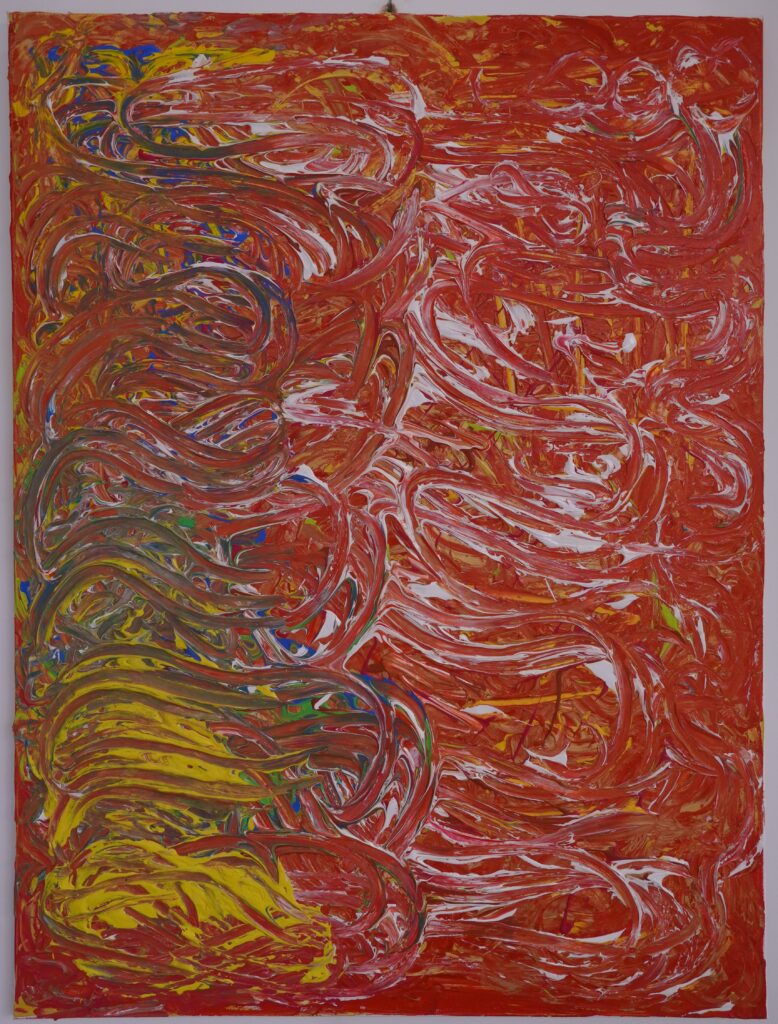
“Blessing Wave” by Liem Sian An (Sam Sianata)
🖼️ Overview & Concept
- The title “Blessing Wave” refers to two elements: Wave symbolizing dynamics, change, and the power of nature, and Blessing representing divine grace or favor.
- This work illustrates that divine blessings can manifest as waves—sometimes turbulent, yet bringing enlightenment and purification.
🎨 Technique & Aesthetics
- Expressive Colors: Utilizes a palette of red, yellow, blue, gold, and natural green to reflect spiritual and emotional dimensions.
- Dynamic Composition: Features layered currents or waves, possibly interspersed with white light as a symbol of sincerity and enlightenment.
- Bold Brushstrokes: Depict the strength of blessings that “surge” like a storm, conveying great hope.
🧠 Philosophical & Symbolic Meaning
- Wave: Symbolizes trials, challenges, or transformations in the journey of human life, akin to an ocean that is sometimes calm, sometimes turbulent.
- Blessing: Represents purity of heart and enlightenment that emerge after facing life’s waves.
- This work invites viewers to see every challenge as an opportunity to receive spiritual blessings.
💫 Spiritual Dimension
- Depicts the presence of the divine in every upheaval of life.
- Encourages viewers to be grateful for blessings in any form, even when they come through change or trials.
- Calls for resilience and surrender in facing life’s “storms,” where true strength is forged.
🪞 Reflection for Viewers
- Serves as a mirror for those facing difficult times or significant changes.
- Encourages understanding that blessings do not always come in expected forms.
- Promotes inner peace amidst life’s waves.
💎 Conclusion
- “Blessing Wave” is an artistic meditation on life’s trials and divine grace.
- Through expressive colors, dynamic composition, and wave symbolism, this work invites viewers to find hope and strength amid challenges.
- A call to recognize the seeds of blessings in every wave of life.
Shirotol Mustaqim
(Straight Path of Freedom)
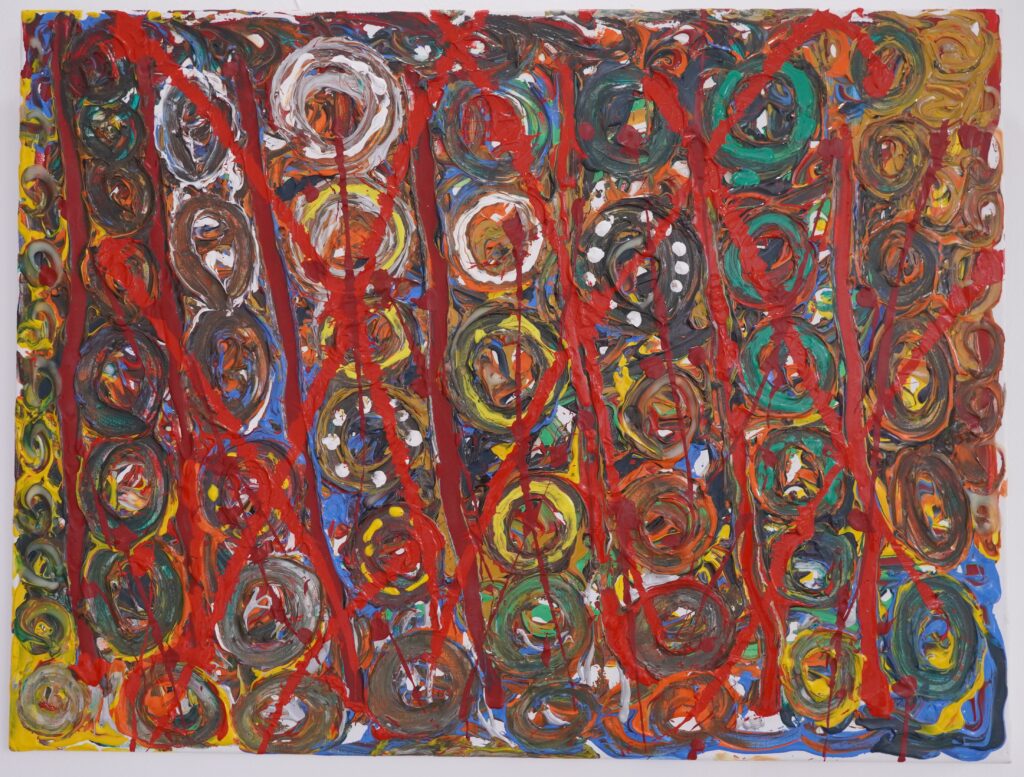
Shirotol Mustaqim (Straight Path of Freedom)
The painting “Shirotol Mustaqim” (Straight Path of Freedom) by Sam Sianata is a profound acrylic-on-canvas artwork measuring 60 × 80 cm, valued at Rp 7 billion. It encapsulates deep spiritual, philosophical, and aesthetic themes. Below is an in-depth analysis:
🖼️ Overview & Concept
- The title “Shirotol Mustaqim” (Straight Path of Freedom) refers to the Islamic concept of the straight path, symbolizing spiritual guidance and liberation from sin.
- The artwork visualizes human suffering due to the burdens of sin through abstract circular compositions, representing unity and struggle.
🎨 Technique & Aesthetics
- Abstract Style: Features circular forms symbolizing the unity of humanity in its struggles, rendered with expressive brushstrokes and vibrant colors.
- Color Dynamics: Incorporates red (symbolizing sacrifice), white (purity), and other tones to evoke emotional and spiritual depth.
- Holistic Presentation: Combines visual art with musical elements, creating a multi-sensory experience that transcends traditional media.
🧠 Philosophical & Symbolic Meaning
- Circles: Represent the collective burden of sin and the cyclical nature of human struggle, seeking redemption.
- Blood Droplets: Symbolize the sacrificial blood of the lamb, a metaphor for redemption and reconciliation with the divine.
- The “Straight Path” reflects the spiritual journey toward divine closeness, as inspired by the Quranic verse “Ihdinas Shirotol Mustaqim” (Guide us to the straight path).
💫 Spiritual Dimension
- Depicts redemption as a pathway to spiritual freedom, where the “blood of the lamb” signifies purification and divine grace.
- Encourages viewers to seek the “straight path” through faith and resilience, aligning with divine will.
- Invites contemplation on the liberation from sin as a universal human aspiration.
🪞 Reflection for Viewers
- Serves as a reminder of the spiritual journey toward freedom from worldly burdens.
- Encourages viewers to find meaning in suffering and redemption, seeing challenges as steps toward divine connection.
- Promotes inner peace through faith in the “straight path” leading to spiritual liberation.
💎 Conclusion
- “Shirotol Mustaqim” is a profound meditation on human struggle, redemption, and spiritual guidance.
- Through abstract forms, vibrant colors, and symbolic blood droplets, it conveys the journey from sin to divine freedom.
- A call to embrace the “straight path” as a universal quest for purity and connection with the divine.
Bunga Sedap Malam
(Tuberose)
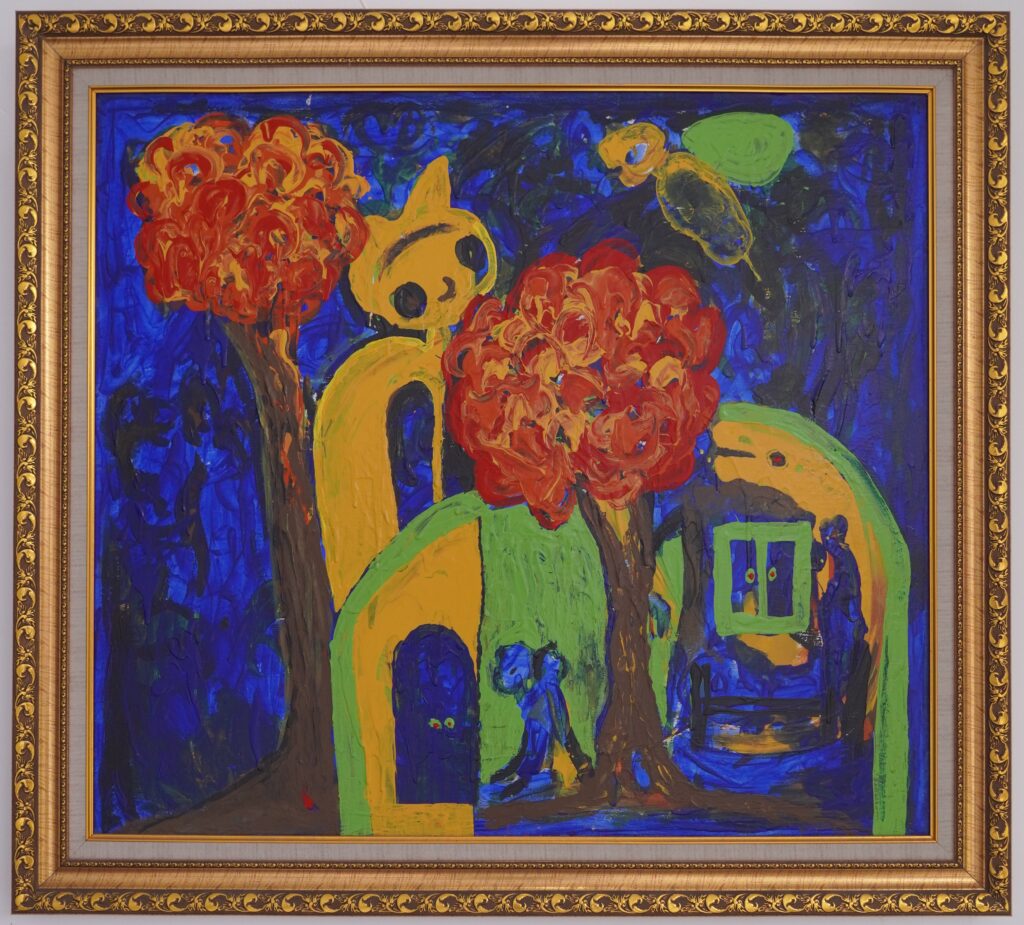
“Tuberose” by Liem Sian An (Sam Sianata)
The painting “Bunga Sedap Malam” (Tuberose) by Sam Sianata is a work of art rich in symbolism and mystical nuances, depicting life’s journey through fragile yet profound beauty.
🖼️ Overview & Concept
- Painted in 2017 with dimensions of 80 × 90 cm.
- Illustrates contemplation of life’s journey filled with joys and sorrows: sweet, bitter, and full of challenges.
🎨 Technique & Aesthetics
- Mystical Colors: Dominated by shades of blue, creating a cold, mystical night atmosphere.
- Dynamic Composition: Blends dark elements with light contrasts, evoking a mysterious and reflective mood.
- Expressive Style: Features abstract forms and color play, emphasizing emotional depth over literal representation.
🧠 Philosophical & Symbolic Meaning
- The title “Bunga Sedap Malam” refers to the tuberose, symbolizing hidden beauty, the fleeting nature of time, and fragile eternity.
- Represents life’s transient yet intense phases, akin to a flower glowing in darkness.
- Invites viewers to reflect on solitude, hope, and the allure of life’s challenges.
💫 Spiritual Dimension
- Depicts beauty emerging from darkness, symbolizing resilience and hope.
- Encourages gratitude for life’s fleeting moments of beauty, even in adversity.
- Calls for introspection and appreciation of life’s mystical and transient nature.
🪞 Reflection for Viewers
- Serves as a mirror for those navigating life’s challenges or moments of solitude.
- Encourages viewers to find beauty and meaning in difficult times.
- Promotes inner peace through contemplation of life’s transient nature.
💎 Conclusion
- Displayed at an exhibition in Denpasar (Gallery MeneerSam, April–May 2025) alongside six other works.
- Febiyanto, an art enthusiast, described it as a “unique work” reflecting Sam Sianata’s vision of life.
- “Bunga Sedap Malam” is an artistic meditation on life’s beauty and fragility, blending visual and auditory elements through an accompanying theme song by Sam Sianata.
| Aspect | Description |
|---|---|
| Theme | Life, darkness & light, existential reflection |
| Color | Dominant blue, mystical night tones |
| Style | Expressive, symbolic, dual art (painting + song) |
| Meaning | Portrait of human emotional & spiritual journey |
| Experience | Integrated visual + auditory experience |
📌 Approach to Appreciation
- Observe the contrast of colors, textures, and symbolic elements like the flower shape.
- Reflect on the philosophy of “blooming in the dark”—beauty under trial.
- Listen to the accompanying theme song by Sam Sianata for a holistic experience.
- Discuss personal perceptions: does the painting evoke solitude, hope, or awe?

